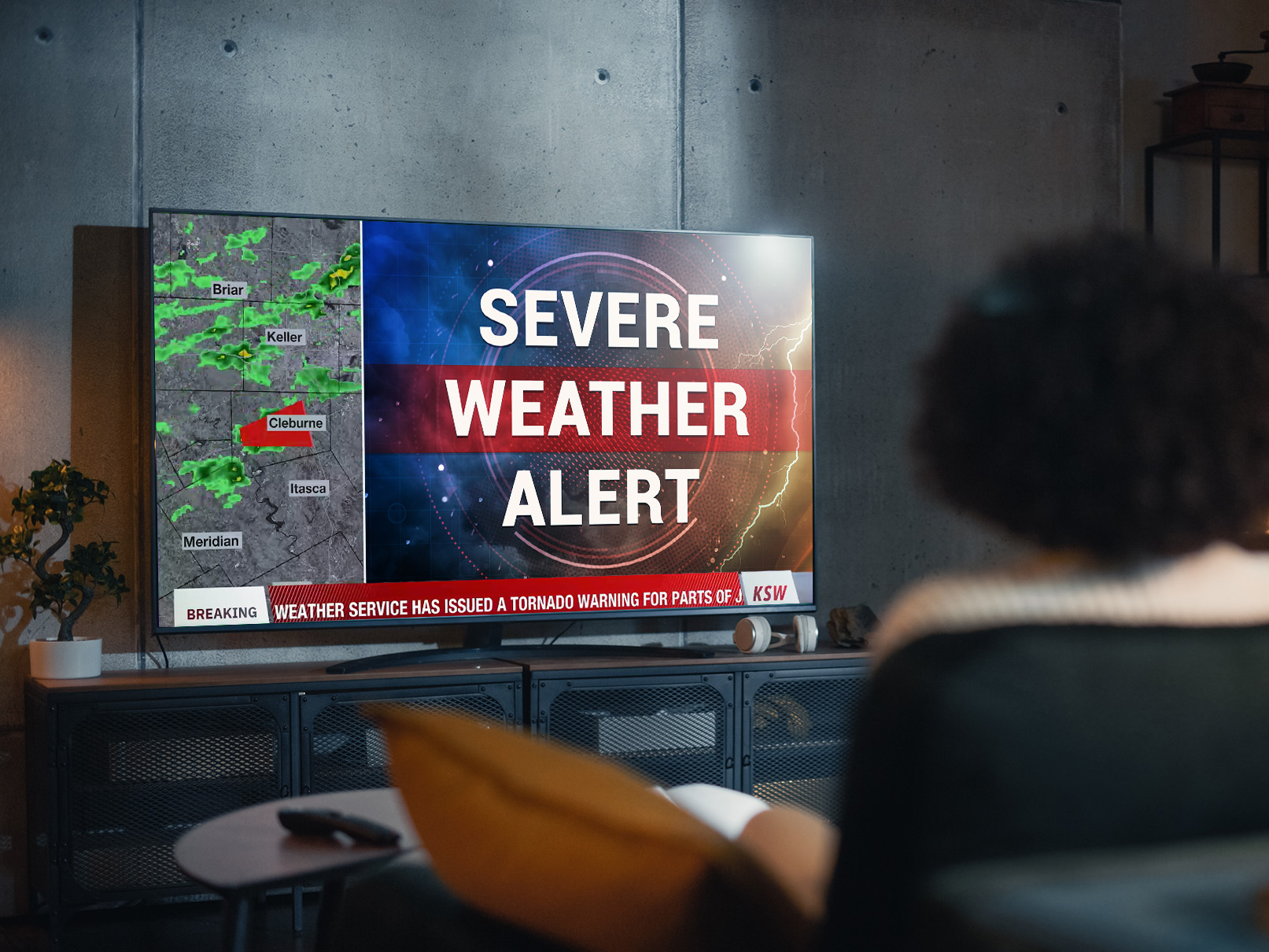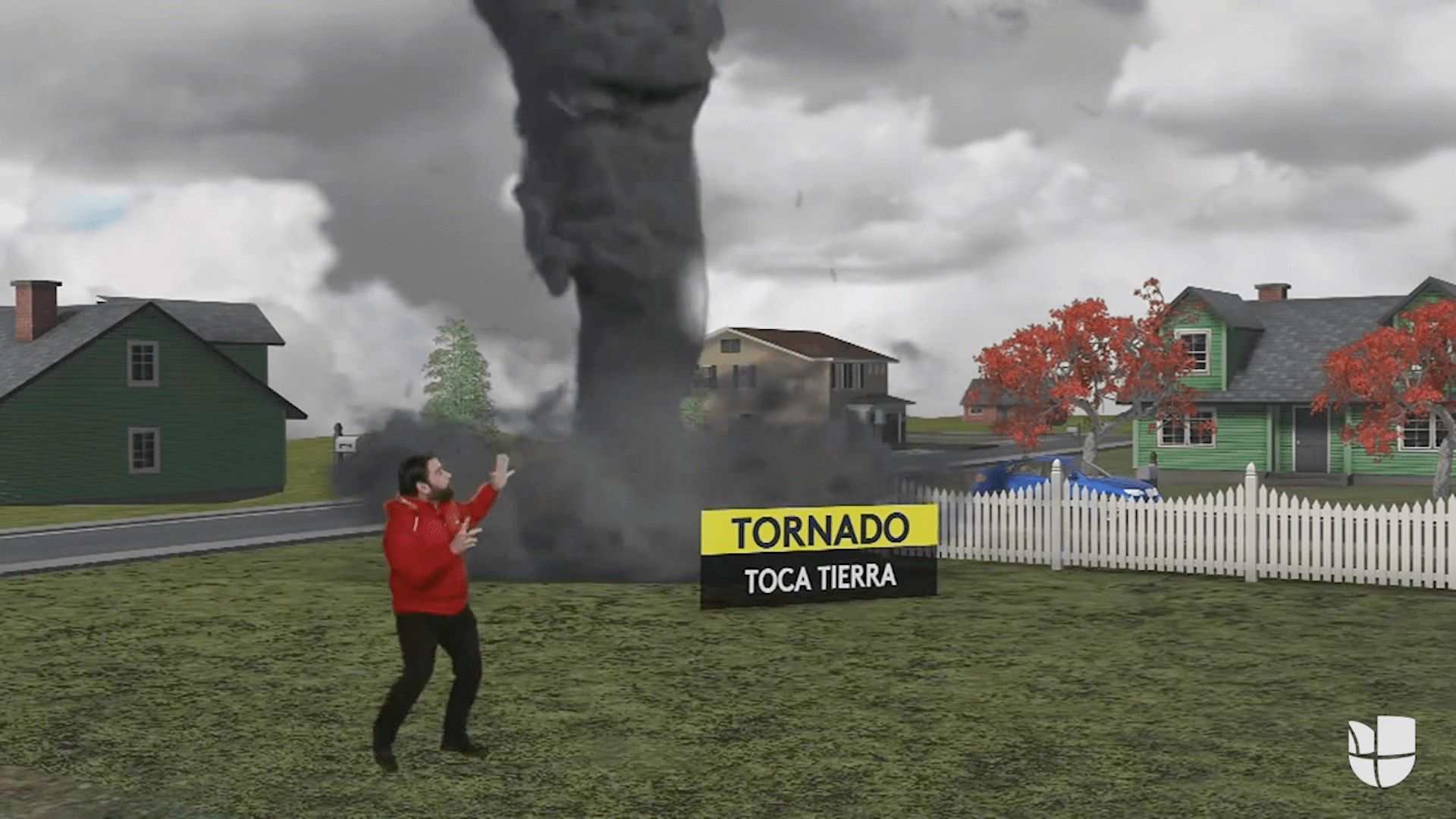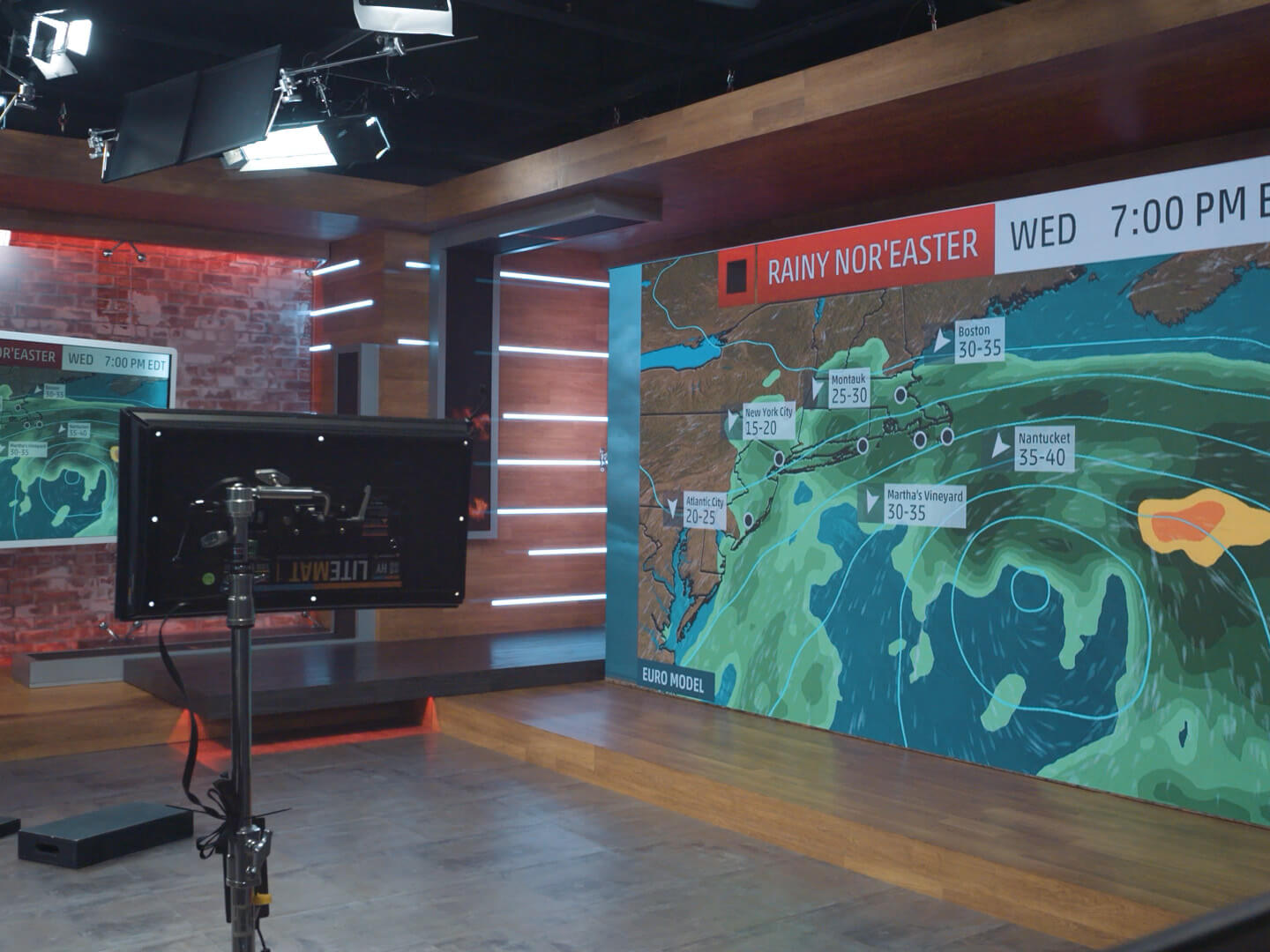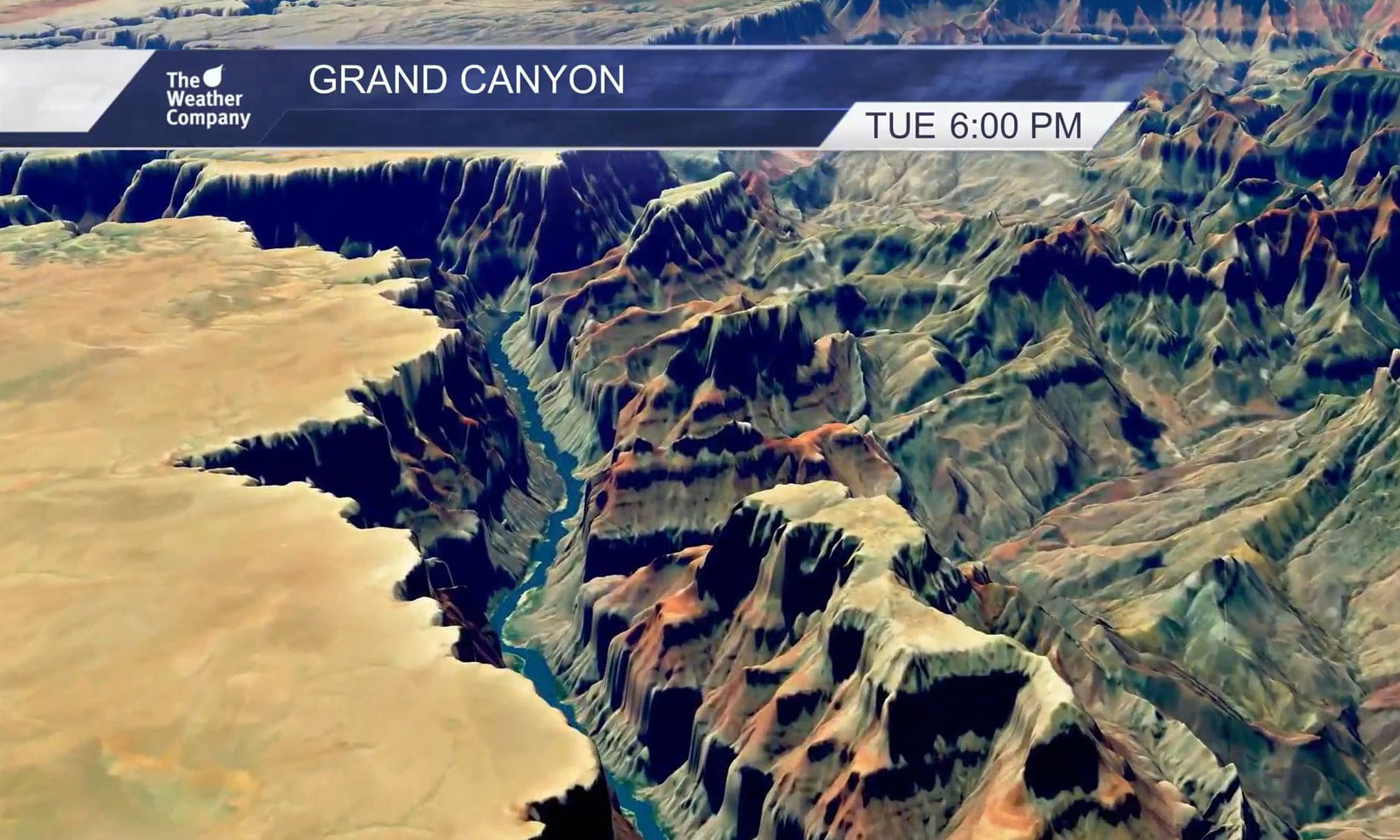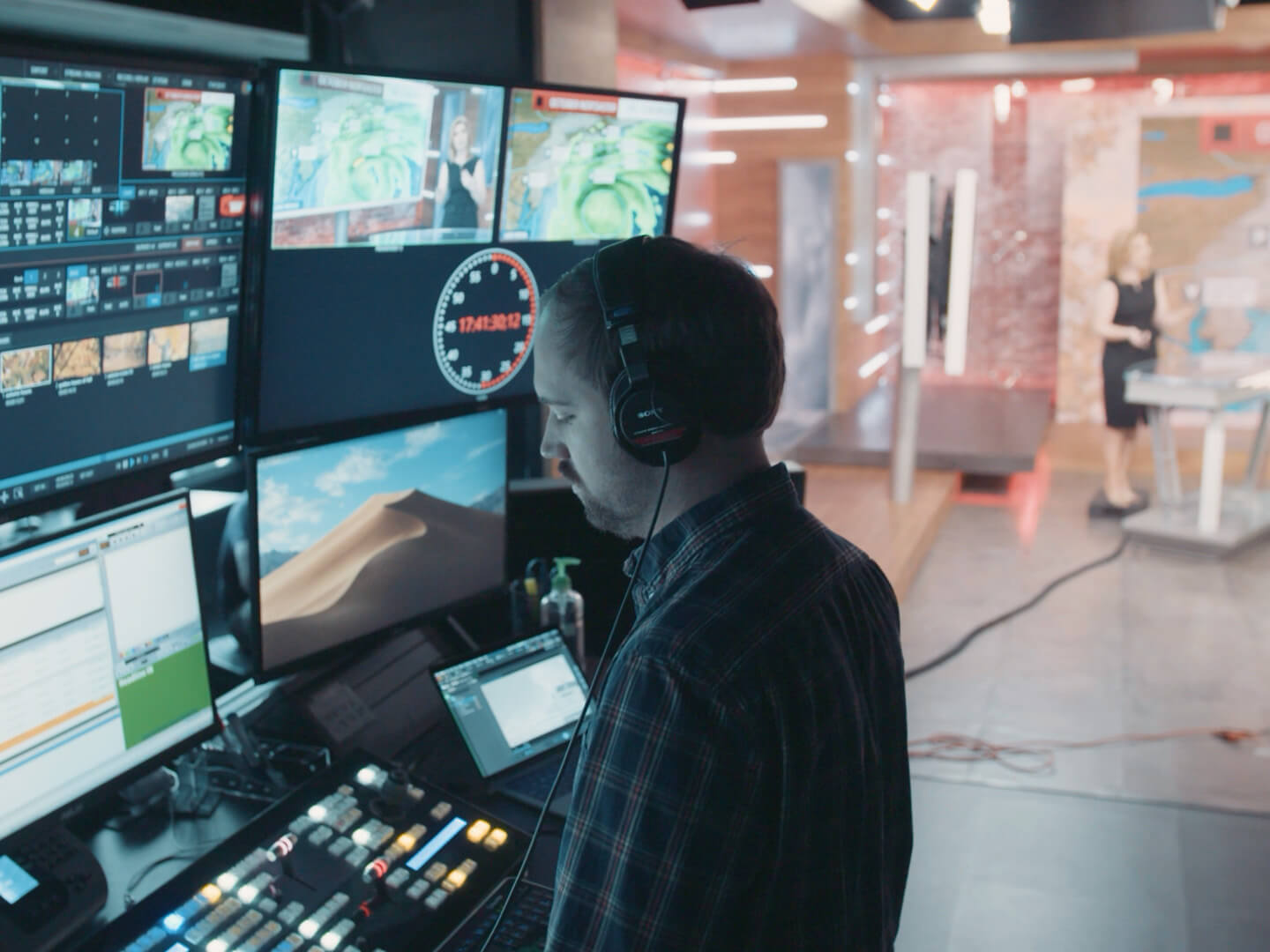AI in weather forecasting, prediction and communication
Continue readingIn the rapidly evolving world of television broadcasting, remote broadcast production has become a game-changer. Remote broadcasting refers to the production of television content from locations outside the traditional in-studio setup. This method picked up significant momentum in response to the COVID-19 pandemic. To accommodate social distancing measures, broadcasters rapidly adopted remote production techniques, leveraging remote desktop software and cloud platforms to create innovative workflows.
While the traditional in-studio model remains relevant, remote broadcasting complements it by offering flexibility and scalability. Broadcasters are now able to prioritize efficiency and seamless content delivery, whether it is produced remotely at home, on location or in the studio.
This comprehensive guide explores the intricacies of remote broadcast production and highlights its benefits, requirements, workflow and best practices. Additionally, it showcases how Max products from The Weather Company can enhance the remote broadcast production process.
What is needed for a remote broadcast?
When conducted successfully, remote broadcasts can offer teams an efficient, flexible method for delivering content. To execute a remote broadcast, several elements are essential:
Internet access
A stable and reliable internet connection is paramount for transmitting video and audio data seamlessly. Without a robust internet connection, the quality and reliability of the broadcast may be compromised, leading to buffering, pixelation and audio distortions that can significantly impact the viewer’s experience.
Broadcast equipment
Depending on the scale and complexity of the broadcast, appropriate equipment such as cameras, microphones, lighting and encoding devices are required. Investing in quality equipment is essential to ensure that the remote broadcast captures crisp visuals, clear audio and proper lighting.
Browser-based video production tools
Utilizing web-based tools enables remote production teams to access and collaborate on various tasks, including video editing, graphics creation and more.
How do remote broadcasts work?
These kinds of broadcasts involve capturing video and audio content from remote locations and transmitting them to a central control facility or studio. This is achieved through technologies such as digital video transmission, cloud-based platforms and remote control systems. The remote production team collaborates and coordinates with the central control facility, ensuring a seamless broadcast.
In the world of remote broadcasting, digital video transmission serves as a fundamental element. It enables the efficient and reliable transfer of video and audio signals over the internet and dedicated networks. This technology empowers broadcasters to capture content from remote locations and transmit it in real time or near real-time to the central control facility, ensuring that the quality of the content remains intact throughout the process. By harnessing digital video transmission, broadcasters can deliver high-quality updates to their audiences, regardless of the geographical distance between the remote locations and the control facility.
What are the benefits of remote broadcast production?
Remote broadcast production offers numerous benefits that can redefine how broadcasters operate, such as:
Reduced equipment need
Leveraging these production techniques allows broadcasters to significantly reduce the amount of equipment needed at remote locations. A reduced need for equipment not only leads to cost savings but also enhances flexibility in broadcasting operations. With remote production, broadcasters can access and control the necessary equipment from anywhere, streamlining the setup process and enabling efficient production workflows without compromising the quality of the broadcast.
Resource optimization and improved collaboration
Remote broadcasting allows access to a broader pool of talent, regardless of geographical location. It facilitates collaboration between different station groups and the utilization of specialized skills across various locations. This is also especially helpful during severe weather when local meteorologists are wall-to-wall doing linear TV coverage at the studio while other meteorologists could be producing digital content from home.
Decreased cost
Remote production offers significant cost-saving advantages for broadcasters by eliminating the need for extensive travel, an on-site crew and redundant equipment. With remote production workflows, broadcasters can reduce expenses associated with transportation, accommodations and logistics. Additionally, the ability to remotely access and control equipment eliminates the need for duplicate setups, further optimizing costs.
Ability to publish content from anywhere
Remote broadcast production provides broadcasters with the ability to create and publish content from virtually anywhere, offering unprecedented flexibility and expanding their output volume and reach. With this capability, broadcasters can capture and share events, interviews or breaking news in real time, ensuring timely delivery of content to their audience. By removing geographical limitations, remote production maximizes audience engagement and enables broadcasters to connect with viewers worldwide, fostering a global presence and amplifying the impact of their content.
Coverage for station groups during emergencies
During emergencies or natural disasters, remote broadcasting plays a crucial role in providing uninterrupted coverage for station groups. By enabling seamless collaboration and content sharing between stations, remote broadcasting ensures that critical information and updates reach the audience in a timely manner.
What are the steps for remote broadcast production?
To execute a successful remote broadcast, follow these steps:
1. Plan for the broadcast
Planning for a broadcast begins with the creation of a script that outlines the content and structure of the video. Additionally, branding discussions help establish the overall tone and messaging of the broadcast. Technological requirements should also be identified to ensure smooth production and delivery. Finally, defining the video’s goals establishes the direction and purpose, ensuring that the broadcast effectively conveys its intended message to the audience.
2. Ensure a proper internet connection
A stable internet connection is vital to prevent disruptions or buffering issues that can negatively impact the transmission of video and audio data. By prioritizing a proper internet connection, broadcasters can deliver a smooth and uninterrupted viewing experience to their audience, enhancing the overall quality of the broadcast.
3. Perform a systems check
Performing a thorough systems check before the broadcast is crucial to ensuring a seamless and professional production. This check involves verifying the functionality of lighting, sound and all equipment involved in the broadcast. By confirming that everything is operating correctly, broadcasters can prevent technical mishaps and guarantee a smooth broadcast that meets desired quality standards and provides a polished and engaging experience for the viewers.
4. Incorporate additional features through video production tools
Teams can use news production tools to elevate their broadcasts with captivating visual elements. By utilizing browser-based video production tools, they can enhance the broadcast with a wide range of engaging graphics, transitions, overlays and more. These tools provide flexibility and convenience, enabling broadcasters to customize their content and create visually appealing presentations that capture the attention of their audience.
5. Publish the video across multiple platforms
Publishing the video across multiple platforms can maximize the reach and viewership of the broadcast. With tools like Max Velocity, broadcasters can seamlessly publish their content across various platforms, ensuring widespread distribution. This multi-platform approach increases the chances of reaching a larger audience, boosting visibility and ultimately maximizing the impact and video views.
Best practices for remote broadcast production
Employing best practices for remote broadcast production can elevate the quality and impact of your content. Here are some key strategies to consider:
Incorporate storytelling
Incorporating storytelling into broadcasts captivates viewers and creates a memorable experience for them. By weaving together compelling narratives, broadcasters can engage their audience on an emotional level, fostering a deeper connection and resonance. A well-told story has the potential to evoke empathy, spark curiosity and hold the attention of viewers, making the broadcast more impactful and leaving a lasting impression.
Collaborate in the cloud
Max Cloud provides broadcasters with remote video production tools that can be accessed conveniently from any location and at any time. This flexibility allows broadcasters to seamlessly manage and produce their videos without physical infrastructure or geographical constraints. By utilizing Max Cloud, broadcasters can optimize their workflow, collaborate efficiently and ensure a smooth and efficient video production process regardless of location or time zone.
Add engaging graphics
With Max Reality and MAXimum Earth, broadcasters can enhance the visual appeal of their broadcasts by incorporating dynamic weather graphics, realistic animations and augmented reality elements.
These engaging graphics create an immersive and captivating viewing experience for the audience, bringing weather forecasts to life with visually stunning effects. Whether it’s showcasing real-time data, 3D animations or interactive visuals, Max Reality empowers broadcasters to deliver informative and visually appealing weather presentations that grab the attention and interest of viewers.
Introduce guest speakers
Introducing guest speakers is a valuable way to enrich the content and broaden the expertise showcased in broadcasts. With the convenience of Max Velocity, broadcasters can seamlessly bring in industry experts or even sponsors at the push of a button, enhancing the diversity of perspectives and knowledge shared during the broadcast. This feature allows for a dynamic and engaging experience, where viewers can benefit from the insights and expertise of guest speakers.
Video production techniques
Max Velocity provides broadcasters with a range of video production techniques that are made even more efficient by using reusable templates. These templates offer a streamlined approach to video production, enabling consistent branding, visual aesthetics and overall messaging across multiple broadcasts. By using these templates, broadcasters can save time and effort, maintain a cohesive visual identity and ensure the efficient delivery of high-quality content to their audience.
Using Max products to enhance your remote broadcast production process
Max products from The Weather Company, powered by Max Cloud, provide a range of remote video production tools that can revolutionize your broadcasting workflow. From efficient collaboration to dynamic graphics and reusable templates, the Max solutions suite empowers broadcasters to produce high-quality, accurate content from anywhere, anytime.
By understanding the requirements, benefits and best practices outlined in this guide, broadcasters can optimize their remote production workflows and leverage Max products to unlock new possibilities in the realm of remote broadcasting.
Let’s talk
To learn more about our professional weather and traffic software solutions for the media industry, contact our media experts today.
Contact us


